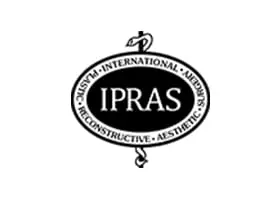Exchange Implants
Breast augmentation (breast enlargement) is one of the most popular plastic surgery procedures available today for a multitude of good reasons. The surgery is safe, predictable, at an affordable price and can produce significant changes in a woman’s appearance almost instantaneously. Patient satisfaction is extremely high due to improved self-confidence, a more aesthetic and proportionate body contour, and better fitting clothing. Every year more and more women elect to undergo this surgery, often after seeing excellent results in friends or relatives.
However, unfortunately, one common misconception of women considering breast augmentation is that once the implants are placed, they stay in permanently. Mr Banwell explains this to all patients undergoing both primary and secondary breast augmentation. Although there certainly are women who have had the same implants for many decades, most women will have their implants exchanged within the first ten to fifteen years after surgery for various reasons. This implant exchange procedure is generally much easier and less invasive than the original surgery, since the pocket for the breast implant already exists.
There are several reasons why you may consider exchange of your breast implants
- desire for change in breast implant size/volume
- 10 years since your first surgery
- ruptured implant
- capsular contracture
- issues with rippling
- desire for change of pocket (age/pregnancy related concerns)
- desire for latest generation implants with new innovations
- concerns about macro-texturing and BIA-ALCL
CHANGE IN BREAST IMPLANT SIZE
One of the most frequent reasons for implant removal and replacement is the woman’s desire to change the size of the implants. The majority of women who have breast augmentation surgery are extremely happy with their new size. Some women, however, decide later on that they would be happier with a change in cup size. In such cases, these women elect to have their implants removed and replaced with larger or smaller implants.
This surgery is usually quite straight forward but may involve changing the pocket and performing a capsulotomy (incision of the breast capsule) or capsulectomy. For more information on breast augmentation click here.
CAPSULAR CONTRACTURE
Some patients may get capsular contracture following their breast augmentation which is always discussed by Mr Banwell at the time of consultation. In such cases, the capsule needs to be removed (capsulectomy) and the breast implants replaced. Depending upon the severity of capsular contracture, can be a sizeable procedure; Mr Banwell will discuss the concept, process and complication in detail at one-to-one consultation. Sometimes, in discussion with the patient, Mr Banwell may perform uplift surgery at the same time. Please click here for more information on capsular contracture or here for information on augmentation mastopexy.
BREAST IMPLANT RIPPLING
Unfortunately implant rippling occurs in every patient with breast implant – the question is whether you can see or feel it – but in the majority of cases the implant is covered well with breast tissue and muscle so it is not an issue. It is related to a patient’s frame and thinness of tissues, the size of implant chosen, the shell composition and the degree of implant fill. It can sometimes become more obvious following weight loss, severe illness and pregnancy. Sadly visible implant rippling is not uncommon especially in slim ladies with a thin breast skin envelope. Therefore placing the breast implant (prosthesis) under the muscle may help minimise this but it can still occur regardless. This is sometimes difficult to correct but replacing the implants with a low ripple quotient prosthesis may be helpful and Mr Banwell would be delighted to discuss this with you at consultation.
UPGRADE BREAST IMPLANTS (LATEST GENERATION)
As you are aware breast implants are not lifelong and will most likely need to be replaced in the future. This period of time will vary between patients and may be one of choice or governed by the appearance of symptoms (as mentioned above – rippling/capsular contracture/ size/ age of implants). Many surgeons use a car analogy to help make sense of the situation for patients: you may buy a car and if looked after well this can last you for many, many years without a problem. However, sometimes they break down, need to be repaired or replaced. Some car owners like to use the car until it breaks down and cannot run any further despite maintenance and repair. However, increasingly car owners will exchange their car for an upgraded model after a few years to ensure they have the latest technology and warranties. Whilst the analogy is not exactly the same, it give you an idea of some of the reasons why people may choose to replace/exchange or upgrade their implants. Mr Banwell uses the latest generation breast implant devices and he can explain some of the latest innovations to you should you wish to consider replacement implants for these reasons.
CHANGE OF IMPLANT POCKET
Some ladies decide to change to the position of their implants and convert to a different pocket. Whilst this may be from a subglandular pocket to a sub muscular (dual plane) pocket and it can also sometimes be the reverse from a submuscular pocket to a subglandular pocket too. Obviously it is important to have a consultation with Mr Banwell to discuss these changes as often there will be a desire to change to size of the implant too – most patients decided to go bigger but we also see many patients also wanting a decrease in cup size and in such cases we may also need to consider breast uplift surgery too.
REPLACEMENT OF TEXTURED IMPLANTS
The change from smooth to textured implants (now called macro-texture) apparently represented a major milestone in the reduction of capsular contracture rates (the most significant long term complication of breast augmentation surgery). The pre-existing smooth implant shells were associated with capsular contracture rates in the order of 40-60%. This then decreased to around 10-15% according to various studies and manufacturers’ reports.
However, recent media reports have caused consternation regarding a little known condition called Breast Implant Associated Anaplastic Large Cell Lymphoma (BIA-ALCL). This is a very rare condition quoted at around 1:25,000 (compared to the risk of breast cancer is 1:8) characterised by sudden swelling of the breast due to serum formation. The cause is thought to be related to the chronic effect of the texturing manufacturing process of implants and whilst it is eminently treatable if picked up early, it is understandably a source of concern for some patients. More research is required to examine all the potential factors in more detail but currently our national organisation (BAAPS) has reassured all patients with textured implants that removal is not essential and that there is no new compelling evidence to support routine removal. However, in those ladies who have concerns about their implants for this reason, Mr Banwell would be happy to consult and offer exchange of implants should this be desired.
Please contact Mr Banwell’s office on 01342 330302 or email help@paulebanwell.com for further information.















































25th March 2025
Minimally Invasive Breast Surgery at Mr Banwell
Read More
24th March 2025
Revolutionary Ultrasound Breast Implant Check Now Available
Read More
18th March 2025
Body Contouring Surgery After Significant Weight Loss
Read More